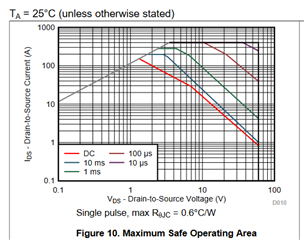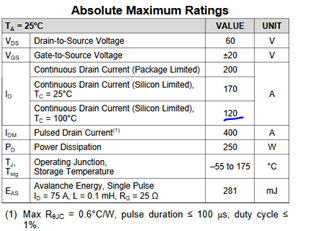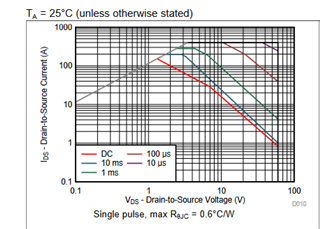Other Parts Discussed in Thread: CSD18540Q5B, CSD19505KTT, LM9061-Q1
Hello Team,A.
We want to select an N channel based on the following specifications.
90A continuous current
200A pulse (100uS)
150A pulse (1mS)
Low RDSon
Low input and output capacitance
The MOSFET is used to turn on/off the power to a board (48V system).
Can I use the MOSFET CSD18542KTT for our application?
How is the VDS related in SOA.
The above graph shows a DC drain current of more than 120A when VDS is above 1V.
The VDS is the product of RDS and te drain current
The RDS of the device is 3.3-mΩ and the ID is 90A.
So the VDS will be only 297mV.
Please correct me is I am wrong.
Can anyone check whether the device is working in SOA or not?
Looking for your reply




